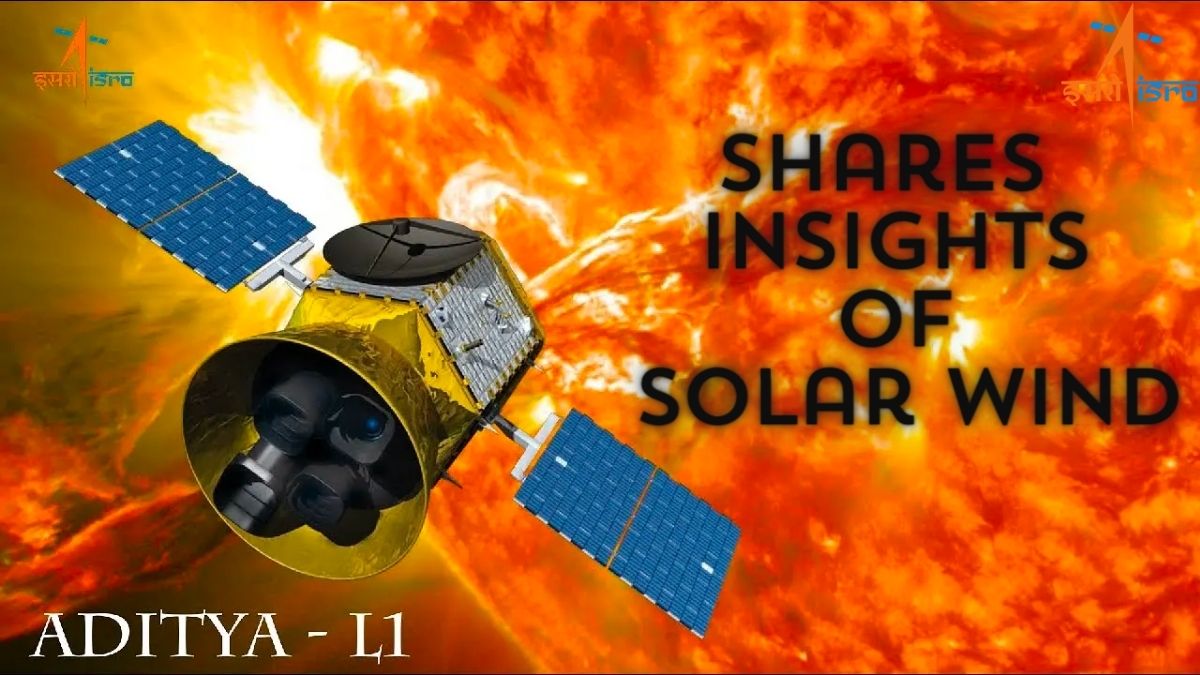Aditya L-1 mission, India’s first biggest mission to study the sun. On September 2, 2023 Aditya L-1 launched successfully from Shriharikota in Andhra Pradesh with the help of PSLV C57. On this day India’s first own solar observatory started it’s journey to L-1 point in space. L-1 point it lies 1.5 million kms from the Earth. It’s the point between Earth and Sun and close to the Earth. On December 01, 2023 ISRO successfully turn on Solar Wind Ion Spectrometer (SWIS) in the Aditya Solar Wind Particle Experiment (ASPEX) payload.
After successfully turn on Solar Wind Ion Spectrometer (SWIS) ISRO shares first pic of solar wind analysis. That shows energy variations in Proton and Alpha particle counts. ASPEX consist of two instruments first is Supra Thermal and Energetic Particle Spectrometer (STEPS), second is Solar Wind Particle Ion Spectrometer (SWIS). Supra Thermal and Energetic Particle Spectrometer (STEPS) was turned on September 10 and Solar Wind Particle Ion Spectrometer (SWIS) turned on December 1.
Read More: Amazing Discovery Of Six Planets Solar System With Synchronized Dance!!
Aditya stolar Wind Partical Experiment (ASPEX) payload is designed to study the Solar wind and energetic eyes as well as their energy distribution. SWIS utilising 2 sensor units with a remarkable 360° field of view each operates in plains perpendicular to one another. By using this instrument Aditya L1 spacecraft measured solar wind ions mainly protons and Alpha particles.
Aditya-L1 Mission:
— ISRO (@isro) December 2, 2023
The Solar Wind Ion Spectrometer (SWIS), the second instrument in the Aditya Solar wind Particle Experiment (ASPEX) payload is operational.
The histogram illustrates the energy variations in proton and alpha particle counts captured by SWIS over 2-days.… pic.twitter.com/I5BRBgeYY5
SWIS instrument was activated on November 223 and as performed well. Over that 2 days in November 2023, it acquired data from one of the sensors and shows sample energy histogram it illustrates variations in Proton (H+) and Alpha particle (doubly ionized helium, He2+) counts. These difference recorded with nominal integration time, providing compressive snapshot of solar wind behaviour.
Aditya L-1 spacecraft will reach its designerted orbit at the alone approximately within 36 days on January 7, 2024.
India’s other coming projects are Gaganyaan, XPoSAT, NISAR, SPADEX. In which Gaganyaan is the most important one. Gaganyaan will be India’s first manned mission to launch astronauts in to Earth’s orbit by 2025.
